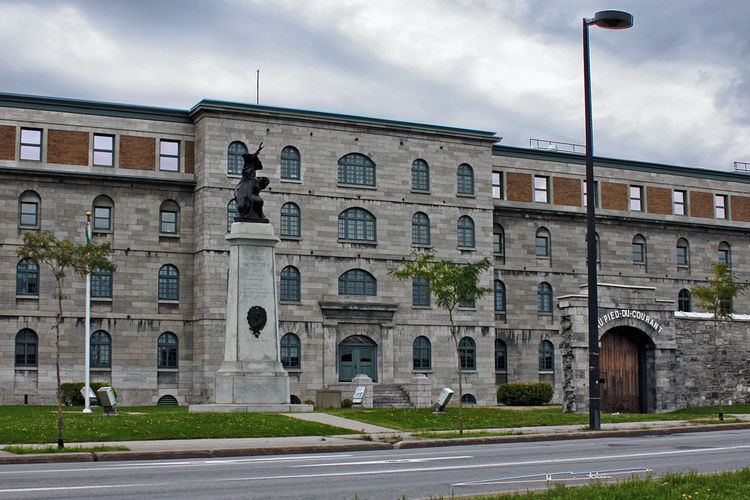Security class historic site (1978) Opened 1835 (1835) | Status Closed Capacity over 276 Phone +1 514-254-6000 ext. 6245 | |
 | ||
Hours Open today · 12–5PMFriday12–5PMSaturday9:30AM–5PMSunday9:30AM–5PMMondayClosedTuesdayClosedWednesday12–5PMThursday12–5PMSuggest an edit Similar SAQ, Marché Cosmopo, Boni‑Soir ‑ Dépanneur Peluso inc, Semb S a Q, Correctio Service of Canada | ||
The Pied-du-Courant Prison is a building in Montreal, Quebec near the Saint Lawrence River and the Jacques-Cartier Bridge.
Contents
Overview
The original plan for a prison in Montreal was designed by Quebec architect George Blaiklock in 1825 to replace the prison at Champ de Mars (built in the first decade of the 19th Century), but John Wells ultimately designed the building (after a prison in Philadelphia, likely the Eastern State Penitentiary built in 1829) that was finally opened a decade later. The building was built to house over 276 prisoners, but held over 1500 prisoners from the 1837-1838 rebellion. The prison operated from 1836 to 1912 as a city prison in Montreal and housed prisoners and hangings following the Lower Canada Rebellion in 1838.
The prison was replaced by Bordeaux Prison and was vacant from 1912 to 1921. In 1921 it was acquired by and became the headquarters of the Société des alcools du Québec, the provincial-owned liquor board in Quebec.
The main prison building was altered with the Gable roof on the front of centre block removed, a fourth floor added (replacing roofing) and new wing added to the rear (by SAQ). The west wall in the front was demolished leaving the gate and east wall intact.
It saw the incarceration and execution by hanging of several Patriotes who had fought the Lower Canada Rebellion. Because of this, it also houses a museum on the history of the Patriotes and a gathering is usually held there on National Patriote Day. Upon the front of its site is found the Monument aux Patriotes by sculptor Alfred Laliberté. The whole of Pierre Falardeau's film February 15, 1839 happens at the Prison.
Monument aux Patriotes
The monument is located in the Place of the Patriots, which is in front of the Société des alcools du Québec offices and the site of the old Pied-du-Courant Prison.
The work of Alfred Laliberté, the Monument aux Patriotes was unveiled on June 24, 1926. On each its three faces a carved bronze medallion represents patriots Chevalier de Lorimier, Louis-Joseph Papineau, and Wolfred Nelson.
